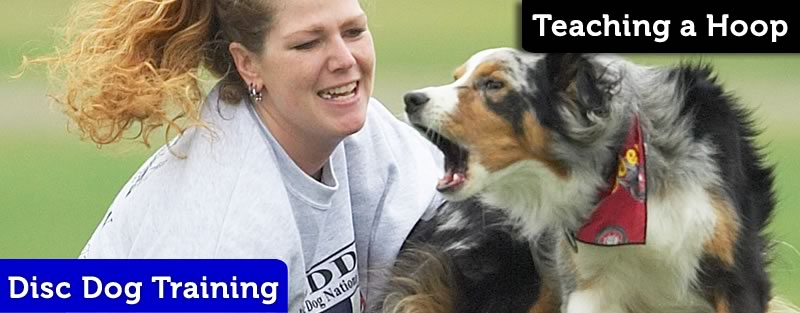
Teaching a Hoop With Bitework
Sorry No Video Available… It’s really old. 🙂
This is a typical Bitework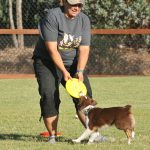 Bitework is an activity or a game that consists of biting and dropping a toy on cue. Cued Bites and cued Drops (and Gives) can be used to teach and reinforce many behaviors.... More Application session. There is a plan, in this case, we’re going to develop a Hoop
Bitework is an activity or a game that consists of biting and dropping a toy on cue. Cued Bites and cued Drops (and Gives) can be used to teach and reinforce many behaviors.... More Application session. There is a plan, in this case, we’re going to develop a Hoop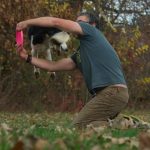 A Hoop is an Over or Vault that travels through a hoop made from your arms or body. A Hoop expresses great teamwork and connection between dog and handler. Most Hoops are done... More, skill where the dog leaps through a hoop made from the handler’s arms. Working this skill with Bitework yields a loose a sloppy understanding and performance of the skill. It works, it’s fast, but if we want to teach this skill well, cookies would be a better method. Teaching this skill with Bitework will yield a ‘quick and dirty’ trick.
A Hoop is an Over or Vault that travels through a hoop made from your arms or body. A Hoop expresses great teamwork and connection between dog and handler. Most Hoops are done... More, skill where the dog leaps through a hoop made from the handler’s arms. Working this skill with Bitework yields a loose a sloppy understanding and performance of the skill. It works, it’s fast, but if we want to teach this skill well, cookies would be a better method. Teaching this skill with Bitework will yield a ‘quick and dirty’ trick.
Executing the Plan
The first thing we want to do is to get the dog warmed up and prepared for working this skill. We warm up the dog both mentally and physically. Moving the dog around, getting the blood flowing is combined with a bit of Atttention, using the Bite as Cookie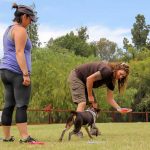 Bite as Cookie is a metaphor for reinforcement with a disc or a bite on a toy. Handler’s often do not treat the disc or the tug toy as a cookie, and focus... More is how we get warmed up. The first minute is a simple warm up.
Bite as Cookie is a metaphor for reinforcement with a disc or a bite on a toy. Handler’s often do not treat the disc or the tug toy as a cookie, and focus... More is how we get warmed up. The first minute is a simple warm up.
Once we have the dog warmed up we are going to set the base level understanding of the skill. Once we deliver that baseline understanding, then we want to try to slip that understanding into a trick or sequence that the dog already knows and understands.
Teaching the Hoop
With the Hoop skill, a major part of it is the dog understanding that they need to get over an arm. Leaping over an arm is not something that most dogs are familiar with, and if the dog leaps over the bottom arm, the rest of the Hoop becomes the responsibility of the handler – make a hoop with your arms. It simply happens.
This is a hallmark of Bitework – the skills we are working on happen as a product of the biting and/or dropping behavior. All we have to do is create drive for the target and place the target in the appropriate place and the skill should happen. Understanding this means that a quality plan is a necessity.
It doesn’t have to be a complex plan. This plan is very simple: get over the bottom arm and bite the target. Once that is happening, a slight adjustment by the handler like making a hoop with the arms, the skill happens.





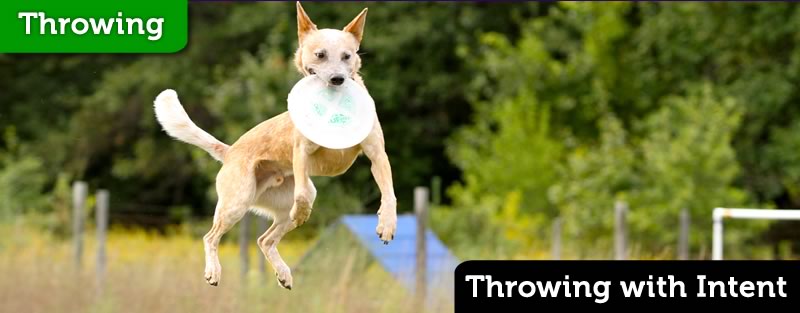
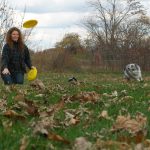
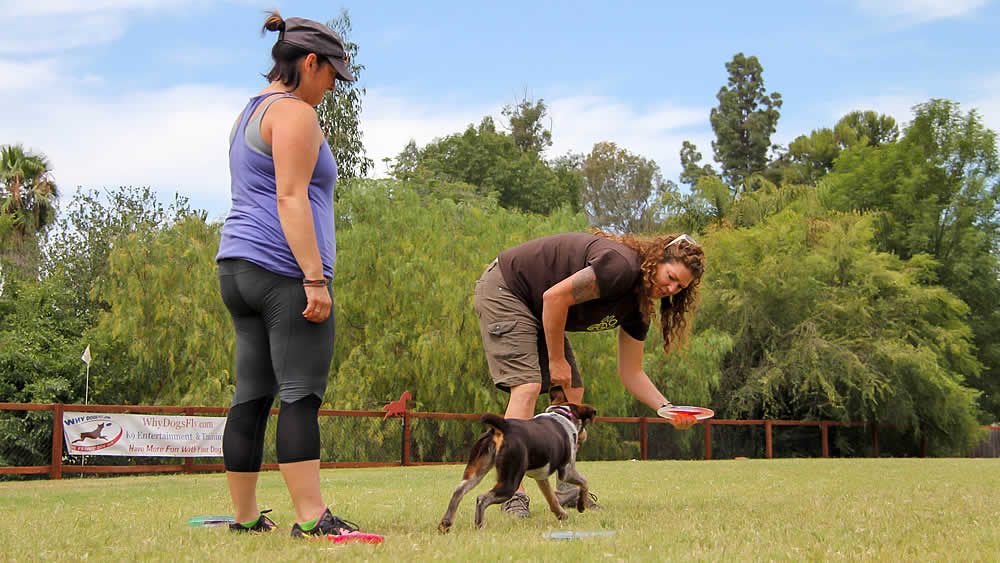

Andrea is already practicing a hoop from your summer camp. She is so smooth with it now. I remember when she started it was a hot mess 😉 I’m just starting to practice it with kai and this will help a ton!
Love it! I was trying to teach the girls an over my arms a few months back by tossing food over it first. It really wasn’t hitting home with them so I gave up for the time being. Now I can do it this way and it makes so much more sense as well as look like something we can achive. Thanks again Ron for making something that was hard a lot easier.
Marion
I like to use food, it really makes for thoughtful work, but sometimes it’s easier just to make it happen.
peace
will this be in the tool kit and can or will be able to play in slow motion
Jeff
Actually this is Bitework, Jeff, not the disc dog foundation, not planning a toolkit right away for this class…
As of now we’re not offering downloadable videos in this class.
peace
Ron
Some Flag and Flash with Brodie
http://www.blip.tv/file/4880485
Jeff Socha
Jeff and Brodie Flag and Flash
0:00-1:00 – Great job, Jeff. Nice and calm, cool collected. Love it.
1:00-2:00 – Still great pace and energy level. You look more relaxed.
The leg overs when you are standing are real sloppy on Brodie’s end. He’s dragging his rear and not really paying attention to the obstacle. Hitting it is part of the game.
We can do several things to fix that:
Raising the Toy
Raising the target that the dog is leaping for is a simple way to get the do clearing the body better. If you notice, Jeff, there are a couple of the standing overs where the target is barely above the obstacle, this means that if the dog catches the target that the legs will hit the body.
Lifting that toy to maximum leaping height and giving the dog a bit more space to collect for leaping towards the target.
A dynamic move we can use to get the dog leaping higher and to lift their legs up is to start the target up real high and lower it after the dog has committed to that leaping height and is in mid-flight. The dog’s head will come down to track the target, and their rear end will come up.
Lower the Obstacle
This is just reducing the criteria. If we set the criteria to a level where it is hard for the dog to drag their legs and touch the obstacle. Repeated success with no touching for the Over will teach the dog that no touching is normal. Then we can start to bring the obstacle up and challenge the dog.
Generalize the Skill
Teaching an Over using an agility jump, or various agility jumps, or any kind of obstacle that you can get them to leap over is a great way to give them the idea about going over.
We can also use a linear vault, our Top Cue. Contrasting the Over skill with the Linear Vault will teach the concept of touching the handler with the feet. You can interchange these skills, a couple Overs, a couple of “Tops”. Of course we have to have the skills on cue before we can contrast them…
Consequent Reinforcement
We want to give reinforcement to our dog based upon their performance of our criteria.
If we have set the criteria at an achievable level, the dog should succeed most of the time, but if they do not succeed, Brodie’s rear legs touch you, you take away the bite with a sharp downward movement. They only get the bite when our criteria is met.
If our dog isn’t getting the reinforcement all the time then we’ll have to drop the criteria.
etc…
😉
02:00-03:00 – Great job with picking up the toy, again nice and calm… That flag and flash over sequence @ 2:25 was real nice.
On the Hoop:
You’re going to want to get a cleaner over before you start to move around and pull the full hoop move.
Good job, Jeff. You and Brodie look great.
peace